Naked Sports Threeway: Aprilia Shiver 900 Vs. Kawasaki Z900 Vs. Suzuki GSX-S750
Somewhere between sport standards and streetfighters
We here at Motorcycle.com are a bit spoiled. You see, stepping up to the top shelf of a manufacturer’s lineup for us is as simple as asking for it – no credit check required, so it’s easy for us to love pricey KTM Super Dukes and MV Agusta Brutales. However, there are much more affordable ways to get into the naked sportbike market, and here’s a trio of fun, fast and cool ways to do it for around 8 or 9 grand.
Get the Flash Player to see this player.
Truly, this collection of roadsters – Suzuki’s GSX-S750, Kawasaki’s Z900 and Aprilia’s new Shiver 900 – has all the performance most anyone needs to frolic in the canyons, let alone stay ahead of traffic, and agreeable ergonomics enable versatility for everything from commuting to touring. While this threesome isn’t a perfect fit in terms of specifications, they are priced in the same range and offer similar sporty performance.
Related: 2018 Suzuki GSX-S750 First Ride Review
Related: 2017 Kawasaki Z900 First Ride Review
Two bikes are conspicuous by their absence: the Triple threats of Yamaha’s updated FZ-09 ($8,999) and Triumph’s Street Triple S ($9,900). Sadly, we were unable to wrangle them in time for this comparison, but we intend to assemble the two Triples when available and will include the winner of this shootout to find out how they stack up with each other.
Related: 2017 Yamaha FZ-09 First Ride Review
Cost
Suzuki’s GSX-S750 is the cheapest way to get 100 rear-wheel horsepower, with an MSRP of just $8,299 for the base version we tested. Antilock brakes are available only on the blacked-out GSX-S750Z, which retails at $8,899, $100 more than the ABS-equipped Z900 in this test. Aprilia’s Shiver 900 adds Italian flair and an elevated price, retailing at $9,399 with its standard ABS.
Style
Like any vehicular purchase, a consumer’s decision to buy a motorbike depends largely on how it strikes their eyes. We think this trio nicely pulls off charming profiles despite their sub-$10k price tags, but how each is alluring depends largely on the tastes of the beholder.
Suzuki’s Gixxus appeals best to those with more traditional tastes, displaying clean lines and subtle accents within a vivid blue primary color. At the opposite end of conservatism is the polarizing Z900, with a fresher visage that probably speaks loudest to younger riders.
The Shiver falls somewhere in between, with its red-accented trellis frame, shock spring, cylinder head covers and wheel stripes adding considerable pop within a relatively calm colorway. Dual undertail mufflers are visually interesting even if they frustrate mass-centralization efforts.
“In terms of looks and finish, the Aprilia is unmatched,” opines Ass. Ed. Ryan Adams. “It feels like a much more expensive motorcycle than it is.”
Ergos
Naked sportbikes like these are a more rational choice for a street sportbike than the committed riding positions of supersport-style sportbikes, requiring much less folding of a rider’s body parts. Of this trio, the the Shiver offers up the least demanding position, with a generous amount of legroom from its comfy 32.0-inch seat height and a moderate reach to the handlebars. The Gixxus isn’t far behind, with a slightly tighter knee bend forced by higher footpegs but a nicely plush saddle.
Kawasaki fitted its Z900 with a thin seat that provides the shortest reach to the ground at just 31.3 inches, nearly a full inch lower than the Suzuki’s. Our testers griped about its resultant deficit of padding and the tight knee bend forced by the low seat. Taller riders would be well served by ordering up the Ergo-Fit Extended Reach seat ($179.99.) from Kawi’s accessory catalog, as it offers an extra inch of legroom along with a snazzy carbon-fiber pattern and embroidered Kawasaki logo.
Powerplants
Aprilia’s newly enlarged V-Twin in its Shiver and Dorsoduro 900s has a welcome boost in output over the previous 750cc versions, but its 896cc motor is fairly tame and not quite enough to make the Shiver feel like an updated version of Noale’s former 1000cc V-Twin Tuono. Horsepower peaks at a modest 82 ponies when measured on our MotoGP Werks dyno.
The GSX-S750 holds its smaller head fairly high in this class, offering nearly 100 rear-wheel horsepower by revving higher than its bigger rivals. An impressively flat torque curve makes the Suzuki feel stronger than actually is, and its peak twist amazingly comes up just 2.6 lb-ft short of the 146cc-larger Shiver! Minor abruptness when reapplying throttle is our only beef about this overachieving powerplant.
Power hogs will gravitate to the 948cc Z900, which cranks out an impressive 115.6 hp at a reasonably low 9800 rpm. It’s relatively docile when ridden with a mild wrist, but it goes on a tear at WFO above 7000 rpm. Second-gear clutch-assisted wheelies ensue…
“I enjoyed the extra power when compared back-to-back with these other motorcycles,” Adams states, to which we all agreed.
Features
Along with the obvious distinctions between divergent powerplants, the breadth of features offered among this trio is where they further diverge from each other.
The GSX-S is fairly basic, with a traction-control system and a slipper clutch amounting to most of its highlights, along with radial-mount front brakes with four-piston calipers on its inverted fork. It lacks ride modes, adjustable suspension damping and an assist-style clutch, and it’s the only one of the group to use a steel swingarm instead of lighter aluminum swingers on the 900s. Kudos to Suzuki for allowing TC to be disabled and for allowing it to remain switched off when the engine is restarted; a TC light notifies the rider it has been disabled.
The Kawasaki adds rebound-damping adjustability to both ends of the suspension equation, along with the preload adjustments of the Suzuki. It’s equipped with a trip computer but lacks traction control, ride modes and radially mounted front brakes. Our tester was fitted with the optional ABS system. All three bikes are equipped with clocks, fuel gauges and gear-position indicators.
The pricier Shiver is, relatively speaking, slathered in features, including TC, ride modes, a steel/aluminum frame, and a lovely TFT instrument cluster with a trip computer and ambient temperature gauge. It’s also the only bike here that has three-way (preload, compression, rebound) adjustable suspension. Optional is the Aprilia Multimedia Platform that allows the instruments to sync with a smartphone. ABS is standard and can be disabled if desired, unlike the Kawi’s ABS.
Ride On!
While the aforementioned details play a part in a prospective buyer’s decision, it all pales next to what is offered by the riding experience of each bike.
Despite the nearly 200cc gap in engine displacements, the four-cylinder Japanese duo feel remarkably similar, aside from the amount of legroom offered by their seating positions. Their weights are nearly identical, with the Suzuki’s 467-lb fully fueled number just undercutting the Kawi’s 469-lb figure. However, the Z900 holds a bit more fuel in its tank (4.5 gallons vs. 4.22) and it carries ABS hardware, so it’s actually the Z that weighs the least, even if it’s just a couple of pounds.
The Shiver gave extra work for our scales, pressing down with 500 lbs (well, 499…) of force.It feels obviously heavier when picking it up off its sidestand, and it can’t blame a generous fuel capacity for its extra lard, as Aprilia rates its tank at just 4.0 gallons, which may inhibit the Shiver during sport-touring duties. During our video shoot ride day, which is notoriously a worst-case scenario for fuel economy, our Shiver’s low-fuel light (and tripmeter countdown) activated as it traveled just 80 miles. The Kawi sucked in nearly as much fuel but has a half-gallon-larger tank. Meanwhile, the Suzuki burned a half-gallon less pump juice than the ‘Priller to lead the fuel-economy sweepstakes.
The Gixxus pleases ears with its snarling intake growl that surely gives pride to an anonymous acoustics engineer working in Hamamatsu. The Z also sounds really good, although lacking some of the invigorating rasp of the GSX-S. The Shiver V-Twin is an entirely different animal, spitting out a bass-heavy drumbeat distinct from its higher-pitched rivals.
The Suzuki has the heaviest clutch pull but with a wider engagement zone than the light-action slip-assist clutch in the Z. The Shiver counters the Japanese cable clutches with a hydraulic slipper unit to ease pull efforts a purported 15% compared to the defunct Shiver 750.
No notable foibles are discovered in typical use around town, aside from the Aprilia’s gearbox sometimes being reluctant to find neutral when stopped. Each machine proves easy to handle, as all decent sporting standards should. The Suzuki’s power deficit is barely noticed thanks for its flat torque curve and the slickest-shifting tranny of the group.
“Despite the 750’s lack of displacement,” notes Adams, “while riding these motorcycles back to back, it was clear the Gixxus was not outclassed in the least.”
The Shiver’s lower-revving Twin chuffs out torque in a smooth and satisfying manner, even if swapping transmission cogs requires more effort than the others.
“With the only V-Twin of the group, which obviously didn’t rev as high or make as much horsepower as the Kawi or ‘Zuk, it made up for it with its low-end torque,” elaborates Jaswinski. “This made the bike fun to ride around town and in the tight canyon twisties. It has an infectious exhaust bark when you rap the throttle, as well as a nice decel-pop that adds sporty character.”
But in terms of pure sport, it’s the Z900 that takes top honors.
All three of these bikes have solid handling characteristics, with predictable turn-in responses and adroit capabilities when leaned over and hustled down a twisty road. The Kaw and Suz again feel quite similar, which should be no surprise considering their identical trail figures (4.1 inches) and nearly identical wheelbases (57.1 inches vs. 57.2, respectively). The Z has the steepest rake angle of the group at 24.5°, but it didn’t tip into corners appreciably quicker than the 25.2° Suzuki.
“I thought the Suzuki had the quickest turn-in,” Adams counters, “although it didn’t feel quite as composed in corners as its competitors.”
Specs aside, it wasn’t clear to our test crew which bike has a handling advantage, as all three provided as much performance as we dared when ridden in the confines of the street. Your speed in the corners will be defined by your performance capabilities more than what’s available from these motorbikes.
The fully adjustable suspension of the Shiver keeps its weight nicely damped, and I rate it best of this group, despite the non-linkage rear shock. However, we must give props to the engineers at Kawi and Suzi for dialing in proper settings in their less-adjustable suspenders, which none of our testers griped about.
Brakes were a slightly different story, with our riders preferring the GSX-S’s radial-mount 4-piston calipers for their richer initial bite and feedback.
“Even though it is the only bike without ABS, it has the best brakes of the group, hands down” Jas reports. “They have strong initial bite with predictable and linear braking feel as more pressure is applied. I only ever needed one finger on the lever.”
With radial-mount 4-piston calipers, braided-steel lines and a sophisticated ABS system, the Shiver appears as if it should win the battle of the brakes. However, they require a fairly hefty squeeze to access their full power and were rated at the tail end of this group.
The Kawi’s brakes are decent but not great. The 4-piston front calipers offer good power, despite being the only non-radial set in this trio and having the smallest rotors (300mm). Our beef with the brakes is mostly with its antilock system.
“The Z900’s brakes worked great so long as their application was smooth,” Jas elaborates. “However, under heavy or abrupt braking, the ABS initiated a little too eagerly with somewhat disconcerting modulation at the lever.”
And The Verdict Is…
This shootout proved to be far more competitive than the spec charts and our predictions initially indicated, as we became enamored with each bike for their versatility and all-around performance.
At the tail end of our scorecard by just a fraction is the still-estimable Shiver 900, which primarily got penalized by having the highest price, the heaviest weight, and the least amount of horsepower. Taking those objective parameters out of the picture and relying on our subjective scores, the Shiv actually finished a very close second to the victor of this comparison.
“After attending the launch of the Shiver 900, I was certain it would have held its own a bit better against the two Japanese competitors,” Adams summarizes. “I thoroughly enjoyed the low-end torque from the 90-degree V-Twin, however, the party was always over too soon in terms of power. For the price, and depending on your plans for the motorcycle, it comes in a close second for me to the Z900 as a great do-everything motorcycle, as long as everything doesn’t include pumping out better horsepower numbers.”
Taking the runner-up spot here is the over-achieving GSX-S750, which delighted us with its fun-to-ride nature and its overall competency in doing everything we asked of it.
“The Suzuki is a great platform for a newer rider looking to get into sportier riding without sacrificing comfort or around-town maneuverability,” Jaswinski states. It’s remarkable the Gixxus rated so highly, given its significant deficit in engine size.
And that leaves us with the winner of this shootout, Kawasaki’s alluring and value-packed Z900. It’s a stunning performance bargain, especially considering the non-ABS version retails for just $8,399, and it’s further validation for choosing it as the Best Standard of 2017 in our annual MOBO awards.
“The Kawasaki completes the best all-around package with its 115 horses, radical styling, and good cornering stability,” Adams raves. “If it weren’t for the too-low seat height in relation to the footpegs and the early intervention of ABS, we wouldn’t have anything to complain about.”
Scroll down to see our full scorecard.
2017 Kawasaki Z900
+ Highs
- Unbeatable bang for the buck
- Strong but smooth power
- Bewitching style
– Sighs
- Cramped legroom
- Average brakes
- Mediocre passenger accommodations
2017 Suzuki GSX-S750
+ Highs
- Overachieving motor
- Best brakes and seat
- Restrained styling
– Sighs
- Only $100 cheaper than non-ABS Z900
- The same weight as Z900
- Restrained styling
2017 Aprilia Shiver 900
+ Highs
- High levels of fit and finishGT-level accommodationsDistinctive V-Twin powerplant
– Sighs
- High levels of fit and finish
- GT-level accommodations
- Distinctive V-Twin powerplant
- Low fuel range
- Underwhelming power
- Hefty
Naked Sports Threeway ScoreCard | ||||
|---|---|---|---|---|
Aprilia Shiver 900 | Kawasaki Z900 | Suzuki GSX-S750 | ||
Price | 88.3% | 94.3% | 100% | |
Weight | 93.6% | 99.6% | 100% | |
lb/hp | 65.6% | 100% | 85.1% | |
lb/lb-ft | 77.5% | 100% | 79.3% | |
Total Objective Scores | 84.5% | 98.0% | 94.1% | |
Engine | 82.5% | 92.5% | 85.0% | |
Transmission/Clutch | 80.8% | 90.0% | 92.5% | |
Handling | 86.7% | 90.0% | 90.0% | |
Brakes | 84.2% | 85.0% | 90.8% | |
Suspension | 90.0% | 85.8% | 80.8% | |
Technologies | 90.0% | 81.7% | 76.7% | |
Instruments | 91.7% | 80.0% | 79.2% | |
Ergonomics/Comfort | 91.7% | 80.0% | 86.7% | |
92.5% | 88.3% | 82.5% | ||
Cool Factor | 86.7% | 90.0% | 80.0% | |
Grin Factor | 81.7% | 91.7% | 85.8% | |
Kevin’s Subjective Scores | 87.9% | 88.1% | 83.5% | |
Ryan’s Subjective Scores | 85.8% | 85.2% | 83.1% | |
Brent’s Subjective Scores | 86.5% | 88.5% | 87.1% | |
Overall Score | 86.3% | 89.4% | 86.5% | |
Naked Sports Threeway Specifications | |||
|---|---|---|---|
Aprilia Shiver 900 | Kawasaki Z900 | Suzuki GSX-S750 | |
| MSRP | $9,399 | $8,799.00 | $8,299.00 |
| Type | 896cc 90° V-Twin engine, 4-stroke, liquid cooled | 948cc, 4-stroke, 4-cylinder, liquid-cooled | 749cc, 4-stroke, liquid-cooled, 4-cylinder |
| Valve Train | DOHC, 4 valves/cylinder | DOHC, 4 valves/cylinder | DOHC, 4 valves/cylinder |
| Bore and Stroke | 92.0 x 56.4mm | 73.4 x 56.0mm | 72.0 x 46.0mm |
| Compression Ratio | 11:1 | 11.8:1 | 12.3:1 |
| Fuel System | Marelli 7SM Double-jet fuel injectors and Ride-by-Wire. | DFI with 36mm Keihin throttle bodies | Suzuki Fuel Injection 32mm throttle bodies with SDTV |
| Transmission | 6-speed | 6-speed | 6-Speed |
| Final Drive | Chain | Chain | Chain |
| Front Suspension | 41mm Inverted Kayaba fork body, adjustable preload and rebound damping. 4.7 in travel | 41mm inverted fork with rebound damping and spring preload adjustability / 4.7 in travel | 41mm KYB inverted spring-preload adjustable fork / 4.7 in travel |
| Rear Suspension | Sachs monoshock absorber with adjustable preload and rebound damping / 5.1 in travel | Horizontal back-link, stepless rebound damping, adjustable spring preload / 5.5 in travel | Linkage-assisted spring-preload adjustable shock / 5.4 in travel |
| Front Brake | Dual 320mm floating rotors. Radial-mount 4-piston calipers w/ steel braided lines, Continental two-channel ABS | Dual 300mm petal-type rotors with four-piston calipers, ABS | Dual 310mm petal-type rotors, radial-mount Nissin 4-piston calipers |
| Rear Brake | 240mm wave rotor, single-piston caliper with steel braided lines | Single 250mm petal-type rotor with single-piston caliper, ABS | 250mm petal-type single rotor, Nissin single-piston caliper |
| Front Tire | 120/70ZR-17 Pirelli Angel ST | 120/70ZR-17 Dunlop Sportmax D214F Z | 120/70ZR-17 Bridgestone Battlax Hypersport S21 |
| Rear Tire | 180/55ZR-17 Pirelli Angel St | 180/55ZR-17 Dunlop Sportmax D214Z | 180/55ZR-17 Bridgestone Battlax Hypersport S21 |
| Rake/Trail | 25.9°/4.3 in | 24.5°/4.1 in | 25.2°/4.1 in |
| Wheelbase | 57.7 in | 57.1 in | 57.2 in |
| Seat Height | 32.0 in | 31.3 in | 32.2 in |
| Curb Weight | 480 lbs (claimed) 499 lbs actual | 463.1 lbs (claimed) 469 lbs actual | 469 lbs (claimed) 467 lbs actual |
| Fuel Capacity | 4.0 gal | 4.5 gal | 4.22 gal |
| Available Colors | Hi-Tech Silver | Pearl Mystic Gray/Metallic Flat Spark Black, Flat Ebony/Metallic Spark Black, Candy Persimmon Red/Metallic Spark Black | Metallic Triton Blue / Glass Sparkle Black and Pearl Mira Red |
More by Kevin Duke



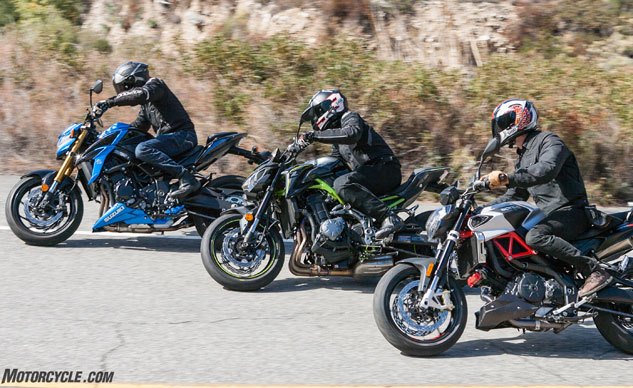
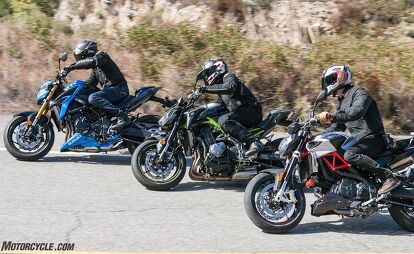















































































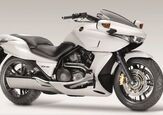
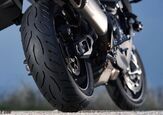
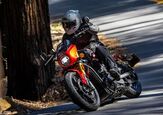

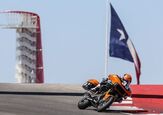
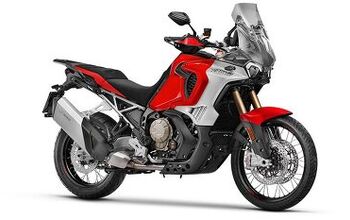
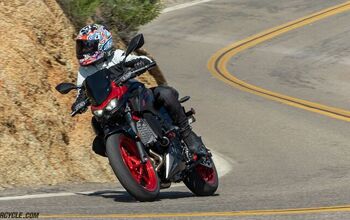
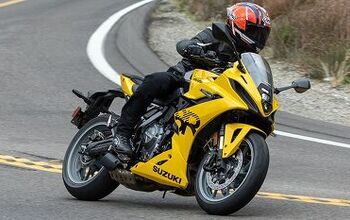
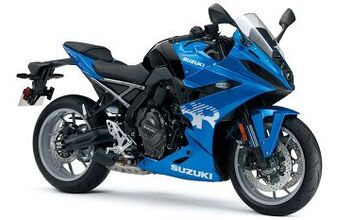
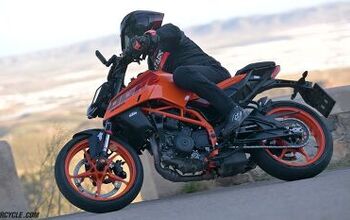

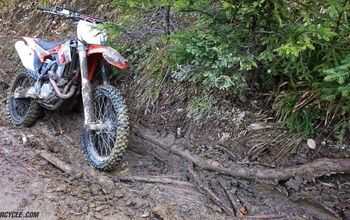
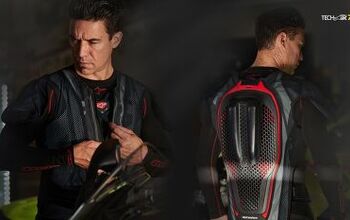
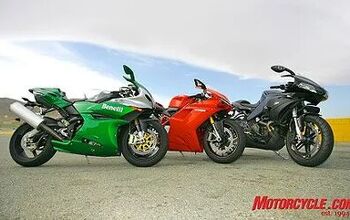
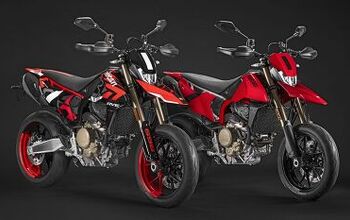
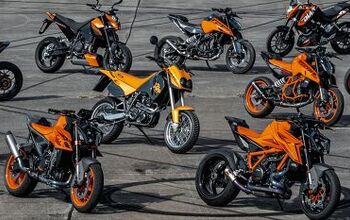
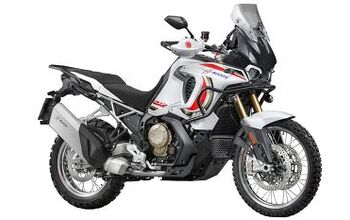
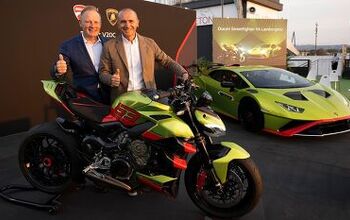
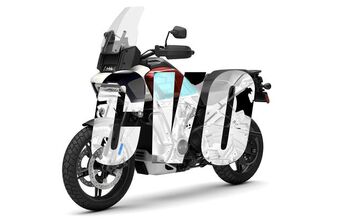
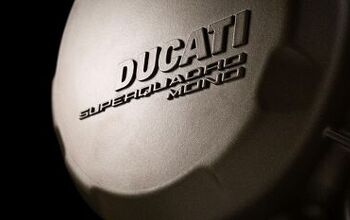

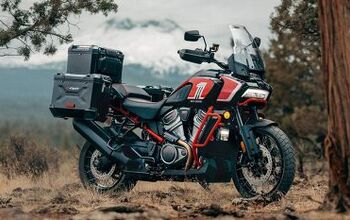
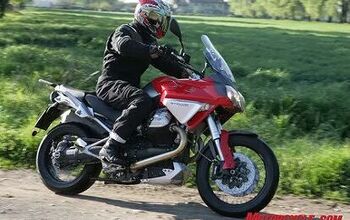
Comments
Join the conversation
One consideration for those of us that don't live in a perpetual warm climate, the Z900 makes a minuscule 336 charging watts. I know that's not on most people's radar, but when you start adding heated pants, jackets, grips, gloves, GPS, radar det, other stuff you'll be way past running out of charging power. Funny thing too, the Z1000 and Ninja1000 versions of this engine make 336 watts. Yes the 948 was derived from the 1043.
(Just for example) Triumph Street Twin cranks out a boat load at 660 watts. Guess Kawasaki figured the stator pumpkin would stick out as far as a R NineT engine jugs with a real coil beneath it?
And please Motorcycle.com, start publishing charging watts @ X rpm as part of your bike statistics. If you could do that, that would be greeeeeat, mmkay? Seems only Rider Magazine does this.
It would be cool if the objective scores were based on some standard outside these three bikes, so you could compare those scores to those in another shootout. Make 200 hp. the standard for engine, etc. etc. Well written and great photos!